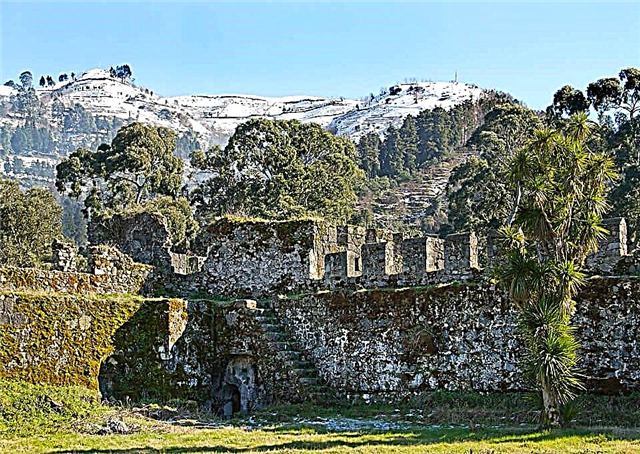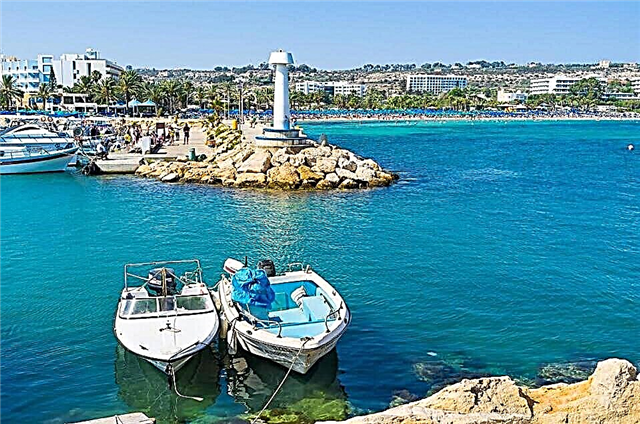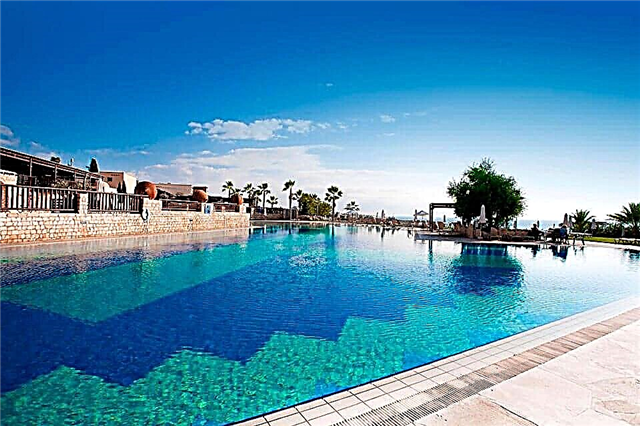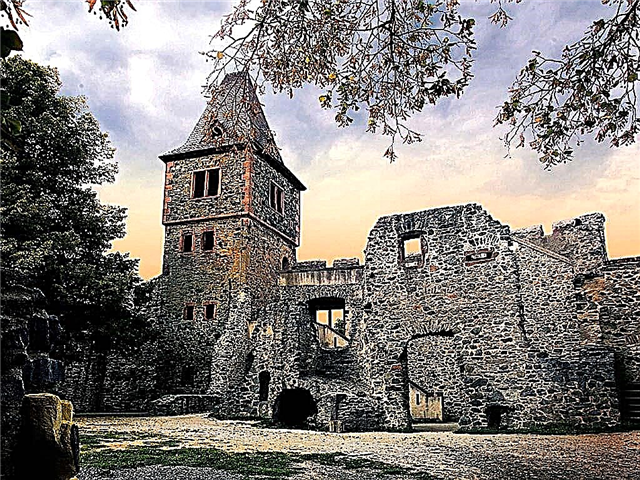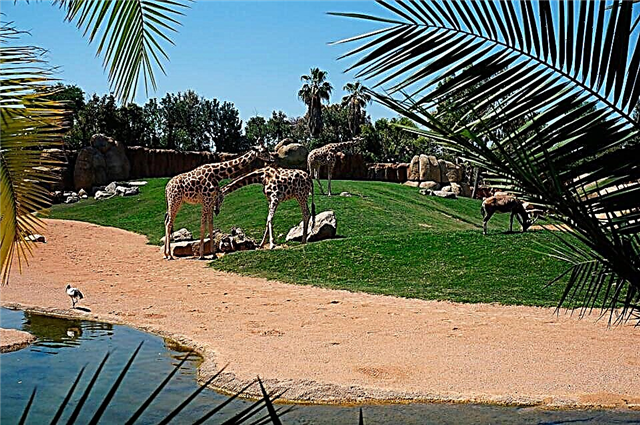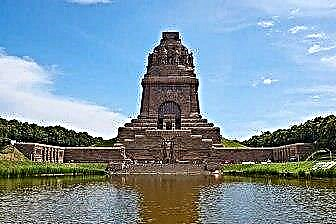Leipzig is known as a city of great fairs. For more than 800 years since the time of Emperor Maximilian I, it has preserved unbreakable trading traditions. In the 17th-18th centuries, the city was the cultural and economic center of the region, a place where the progressive printing technology at that time flourished.
Leipzig is famous for its famous natives. Indeed, the greatest musicians I.S. Bach, F. Mendelssohn, R. Wagner. I.V. studied at the local university. Goethe. Numerous monuments and house-museums of these famous people remind of the great past of the city and its invaluable contribution to world culture.
The founder of the Reformation, Martin Luther, liked to visit local restaurants. In the 20th century, it was from Leipzig that unrest began, as a result of which the Berlin Wall fell and Germany became united again.

The best hotels and hotels at affordable prices.
from 500 rubles / day
What to see and where to go in Leipzig?
The most interesting and beautiful places for walking. Photos and a short description.
Old town hall
The building was built in the 16th century according to the design of the Saxon architect P. Speck in the style of the early German Renaissance. Subsequently, the town hall was rebuilt and reconstructed several times. From the town hall tower every Sunday the city anthem is played by trumpeters. The building is located in the historic center of Leipzig on the Market Square. In the Middle Ages, this square hosted not only trade fairs, but also knightly tournaments and public executions.

New town hall
The new city hall was erected at the beginning of the 20th century on the site of a demolished 13th century castle. The appearance of the majestic building traces the features of Art Nouveau, Renaissance and Gothic. The opening of the New Town Hall took place in the presence of the Saxon King Frederick Augustus III. The facade of the building is lavishly decorated with bas-reliefs, sculptures and decorative elements. The architectural complex is crowned with a round 114-meter tower.

Goliz palace
The palace of the 18th century, built for the city councilor IK Richter according to the project of the architect F. Seltendorf. The castle was inherited by the official's wife, Christina Hitzer. Under the guidance of her new husband, the interior decoration and decoration were completed. At the end of the 18th century, prominent cultural figures were frequent guests of the castle, which is why the place acquired a reputation as a center of spiritual life. The palace passed into city ownership after the death of Christina.

Monument to the Battle of the Nations
A monument dedicated to the historic battle of October 16-19, 1813, when Napoleon's army met at Leipzig with the allied forces of Prussia, the Russian Empire, Austria and Sweden. The monument was unveiled exactly 100 years after this event in 1913 in the presence of representatives of all states that took part in the battle. The construction of the monument took thousands of tons of concrete and countless granite slabs.

Church of St. Nicholas
One of the oldest churches in Leipzig, built in the XII century. Within the walls of the temple, the great I.S. Bach performed their immortal work Matthew Passion for the first time. The church became famous for the fact that it was here in 1989 that activists gathered with calls to demolish the Berlin Wall. Thanks to this event, the nickname “the cradle of the peaceful revolution” was firmly stuck to the temple. At the moment, the church of St. Nicholas is Lutheran.

St. Thomas Church
The temple was built in the 13th century and has undergone several reconstructions over 700 years of history. A building in the late Gothic style has survived to this day. The Church of St. Thomas is known all over the world, as I.S. Bach (the musician's grave is inside the building). At the beginning of the 20th century, a sculpture of a musician was erected on the square in front of the temple. Also in 1539, Martin Luther himself read a sermon in the church.

Temple-monument of Russian Glory
Orthodox church, erected in memory of Russian soldiers who died in the battle of 1813 near Leipzig. The church was consecrated in 1913 on the day of the centenary of the battle. The building is made in the style of hipped-roof temples of the 17th century, designed by V. Pokrovsky. During the 20th century, the building was restored several times, which ensured its excellent preservation. The church iconostasis, located inside, is also made in the manner of painting of the 17th century.

Bach Museum-Archives
The collection is located on the territory of the house where I.S. Bach. The composer spent more than 25 years of his life here until his death in 1750. On the territory of the house-museum, tourists can see original scores and manuscripts belonging to the hand of a genius, as well as personal belongings of his family. Parts of the organ used by Bach have also survived. In 2008, the museum was taken over by the University of Leipzig.

Mendelssohn House Museum
The museum is organized in the house where F. Mendelssohn spent the last three years of his life. At that time, he was the leader of the city symphony orchestra. Mendelssohn became famous all over the world thanks to the "Wedding March". The house-museum is unique in that the original interior and furnishings have remained practically unchanged inside. The collection consists of personal belongings, sheet music, documents and letters written by the composer.

Forum of Contemporary History
Historical Museum, where exhibits from 1945-1989 are exhibited, that is, counting from the division of Germany to the fall of the Berlin Wall. The permanent exhibition was opened in 2007, it contains about 3200 various documents, photographs, newspaper articles. The nature of the exhibition, to put it mildly, is somewhat propagandistic, since everything related to the GDR is displayed in an unflattering light. Germany, on the contrary, is shown as a stronghold of justice and democracy.

Grassi Museum
Exhibition complex that unites the Museum of Applied Arts, the Museum of Musical Instruments and the Ethnographic Museum. The collections reveal various aspects of the history of Germany and other countries. The exposition of musical instruments is quite interesting; the oldest copy dates back to the 16th century.The building of the Grassi Museum was built at the beginning of the 20th century in the Art Deco architectural style.

Art Museum
The meeting was founded in the middle of the 19th century on the initiative of local entrepreneurs and bankers. Many of them donated part of their private collections to create a gallery. Museum funds were replenished throughout the XX century, the last major donation was donated in 2004 (collection of French painting). The first building of the museum was destroyed in 1943, in the 2000s. a new modern structure was built in the form of a glass cube.

Gewandhaus
City Concert Hall, where the symphony orchestra of the same name is located and performs. The musical group was founded in the middle of the 18th century. The historic building was destroyed during World War II, and a new concert hall was built in 1981. Brilliant orchestras from Europe are playing on the site, bringing classical repertoire. Works of great German composers are often performed on the stage.

Leipzig Opera House
Leipzig's operatic tradition has existed since the early 17th century. The first building of the musical theater was erected in 1693, later it was demolished. The new building was built in 1868, but it was also destroyed during the bombing of 1943. In 1960, a modern building appeared in a rather laconic style. The stage opened with the staging of the incomparable R. Wagner's opera "The Meistersingers of Nuremberg".

Alte Waage
A copy of the 16th century building located on the Market Square. The historic building, completely destroyed in 1943, was erected specifically for the Chamber of Weights and Measures. In the 19th century, the Alte Vaage ceased to fulfill its functions, as the chamber moved to another place. Until 1943, the building housed the management of the Leipzig Fair. In the 60s. XX century, an inaccurate copy of the Alte Vage was created according to the project of V. Müller.

Leipzig main station
The station building was built at the beginning of the XX century, it is considered one of the largest in the world and the largest in Europe. The front facade is almost 300 meters long. There are over 100 shops inside. After partial destruction in 1943, the station was completely restored by the 60s. XX century. General reconstruction was carried out in 1990. As a result, the station has 26 platforms and serves more than 150 thousand people a day.

Tsum arabishen coffee baum
A coffee house with a history, where composers I.S. Bach, R. Schumann, R. Even Napoleon Bonaparte himself visited this cafe. All this will be gladly told to tourists by caring guides. The institution has been operating since the 18th century and over the past centuries has been preserved in its almost original form. The interior space is divided into Arabic, Viennese, French rooms and a coffee museum.

Auerbach's cellar
An old restaurant located in the historic center of Leipzig. The institution enjoys popular love and unquenchable popularity. This place was first mentioned in 1428 as a wine tavern. It was here, according to Goethe's story, that the meeting between Faust and Mephistopheles took place. If we talk about real characters, then one of the famous regulars of the Auerbach Cellar was the reformer Martin Luther.

"Madler Passage"
Shopping complex located in the center of Leipzig. Its history began in 1525 with a small wine bar. Over time, an exhibition hall was added. At the beginning of the 20th century, a significant expansion of the complex was made, while the historical cellars remained intact. Now, in addition to the historical exhibition of wine, porcelain and leather goods, Madler-Passage houses offices and trade pavilions.

Leipzig Zoo
The zoo appeared in the city in 1878 with a private restaurant. Gradually, it expanded and occupied an area of 27 hectares. The zoo is home to 850 species of animals (more than 10 thousand individuals). It also has its own aquarium, where about 2.5 thousand fish live. One of the parts of the zoo is the Gondwanaland Tropical Park. It became famous throughout Europe due to its huge area and a large number of exotic plants.


